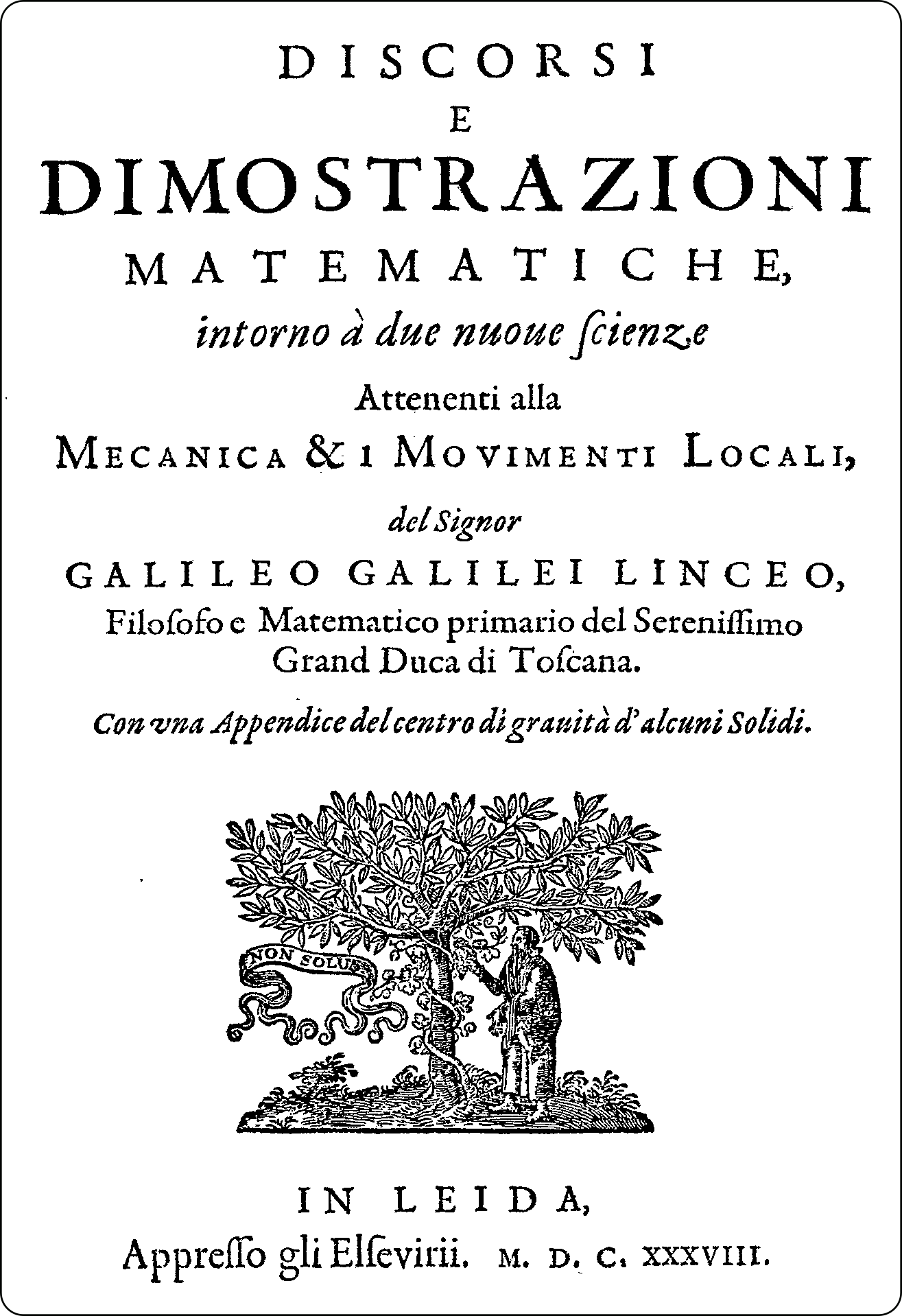
After four hundred years, a dialogue is recreated between the characters that put forward the theory of mechanics in Galileo's Discorsi. The deeds and ideas Galileo Galilei are an ode to free thinking without prejudices.
The setting: In the fringe of the twenty first century, the controversial interpretation in quantum electrodynamics of the which-path problem, where if the photon path is unknown if interference is observed. The orthodox scientists uphold without questioning the second quantization tenets. They close their eyes to contradictions or, to say the least, ignore the enormous conceptual difficulties of the theory. see for example 'distiguishable photons'
Translated to Italian by Walter Fuscaldo, Sapienza Università di Roma. Walter found the right words in an admirable way to recreate the spirit of the original Discorsi. (English translation below)
Giornata 400 + 1
Salviati sta riproducento il celebre esperimento di Young da doppia fenditura, inviando un fotone alla volta.

Dopo la prima prova, Simplicio chiede: Interferiscono?
Salviati risponde: Non saprei.
Dopo la seconda prova: Sim: Interferiscono?
Sal: Non saprei.
Stessa domanda e stessa risposta si susseguono per cento e cento prove.
Tuttavia, all'ennesima prova: Sim: Interferiscono?
Sal: Ebbene sì.
Sim: Ah! l'ennesima prova è stato decisiva!
Sal: No, è stata come tutte le altre.
Sim: Ma allora concedetemi, cos'aveva di particolare da farvi concludere che li fotoni avessero interferito?
Sal: Piuttosto, è stato l'insieme delle prove precedenti a rivelare il diagramma d'interferenza.
Sal: Beh, solo un insieme di fotoni può interferire.
Sal: Errato, in ogni prova, il fotone deve interferire. L'esito particolare di ogni prova non dipende dal resto.
Sim: Perché allora non dovreste notare l'interferenza dopo ogni prova?
Sal: Un punto dopo ogni prova, o una manciata dopo varie prove mi comunicano molto poco. Piuttosto, è l'esito dell'insieme che mi dà l'informazione su ognun d'essi.
Giornata 400 + 2

Sim, (incerto/dubbioso): L'istesso rimane vero per lo percorso de li due fotoni 'colorati'?
Sal, (ancor più incerto/dubbioso): Beh, ehm... Così credo.
Sim: Un diagramma d'interferenza si forma tra un istante $t$ e l'istante successivo, $t+dt$.
Sal: Non c'è verso di sapere quale percorso il fotone abbia preso.
Sim: L'istante ancora successivo, si forma un diagramma d'interferenza spostato.
Sal: Se lo spostamento avviene all'insù, i fotoni 'blu' son passati per lo mezo dell fessura inferiore B, e i 'rossi' per lo mezo della fessura superiore A.
Sim: Una misura dell'insieme ci darebbe allora l'informazione su ogni singolo fotone.
Sagredo (che ascoltava in silenzio la discussione): Sì, sebbene i fotoni una volta giunti su lo piano di rilevamento non son più nè blu nè rossi, ma portano l'informazione di entrambi.
Una volta detto questo, i tre iniziano a fissarsi l'un l'altro.
Simplicio pare piuttosto soddisfatto, mentre Salviati e Sagredo paion piuttosto scossi/perplessi...
Day 400 + 1
Salviati is performing a one photon at a time, Young's interference experiment.
After the first trial, Simplicius asks: Do they interfere? Salviati replies: I don't know.
After the 2nd trial: Sim: Do they interfere? Sal: I don't know.
Same question and same answer follow for the next few hundred trials.
However, at the nth trial: Sim: Do they interfere? Sal: Yes, they do.
Sim: Ah!, the nth trial has been the crucial one.
Sal: No, it was just like any other trial.
Sim: But what was special about it that made you decide that the photons beams do interfere?
Sal: It was the collection of trials that revealed the interference pattern.
Sim: Then, only a collection of photons interfere.
Sal: Not correct, in each trial, the photon must have interfered because the particular outcome of each trial is independent from the rest.
Sim: Why couldn't you see the interference in each trial then?
Sal: A dot obtained from each trial or a few scattered dots from several of them tell me very little. Yet, the collective result gives me information about each one of them.
Sim, (dubitative): Is the same true for the path of the two coloured photons?
Sal, (even more insecure): Well, er..., I guess so.
Sim: An interference pattern builds up between time $t$ and a short time afterwards, say $t+\delta t$.
Sal: No way to tell which path the photons took.
Sim: At a later time, a displaced interference pattern builds up.
Sal: If the displacement is upwards, the blue photons came through the lower slit B and the red ones through the upper slit A.
Sim: A measurement of the collection gives information about each photon then.
Sagredo (who has been listening to the discussion): Yes, although the photons at the detection plane are neither blue nor red but bear information of both.
After this phrase is said, the three of them stare at one another.
Simplicius seems quite satisfied but Salviati and Sagredo look somewhat troubled …

